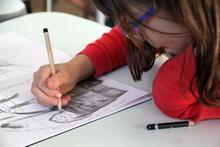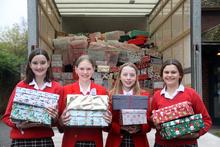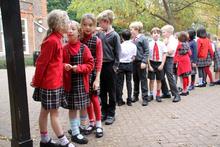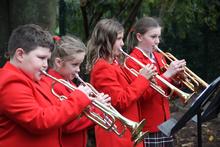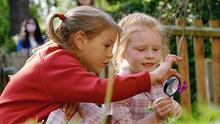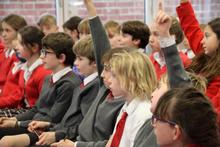News list
There was a buzz of excitement in the Byron House Library as some of the children in Form 2 assembled to take part in an online sketching workshop by author and illustrator Chris Riddell. Mr Riddell, who was Children’s Laureate, has also won the prestigious Greenaway Medal three times for his illustrations. The online session was designed to help inspire a love of reading and drawing and Art Teacher and Librarian Mrs Julia Clarke remarked, ‘Author visits are so crucial to inspiring children to read from an early age. Seeing Chris in action, doodling and sharing stories was
The children at St John's showed they had big hearts by giving Christmas gifts to disadvantaged children and young people in Eastern Europe as they took part in the ‘Love in a Box’ project organised by the Mustard Seed Relief Mission. The children take part every year and this year 200 boxes were collected, decorated and filled with various goodies which will be sent to children who would otherwise not receive a Christmas present.
On 15 November 2021, St John’s joined schools across Britain to embrace the message of ‘One Kind Word’, the theme for this year’s Anti-Bullying Week campaign created by the Anti-Bullying Alliance (ABA) which works to raise awareness of bullying and bring lasting change to children’s lives.
Remembrance Day falls every year on the 11th of November, the date in which the armistice was signed in 1918 to signify the end of World War One. This year, we have been able to mark this important day in person at both Byron House and Senior House and commemorate those who have fallen and mark this occasion with sincerity and respect.
Form 1 experienced the world of ancient Rome with a Roman Day workshop. The children were transported back to Roman Britain with a recreation of life in the past including role-play, practical activities and hands-on experiences with Roman replica artefacts. The children were aptly dressed as Roman citizens, slaves or even barbarians.
St John’s College School is celebrating after achieving the Independent Schools Inspectorate’s (ISI) highest grading of excellent. The rigorous four-day inspection included interviews with pupils and staff; lesson observations; parent, pupil and staff questionnaires; an examination of pupils’ work; and a scrutiny of all policies to enable the inspectors to assess the school’s compliance as well as the educational quality in all areas of school life.
Current parent, Mrs Patel, gave an insightful talk to Form 4 about the customs and traditions of Hinduism, one of the world’s oldest surviving religions and the religion they are currently studying in class. The children found out about the Hindu belief that life is a cycle of birth, death and rebirth and that the actions in this life, or ‘karma’, have an effect on the future.
Form 2 enjoyed an Eco-action day to Lackford Lakes, part of the Suffolk Wildlife Trust, which was designed to empower and inspire the children to take action for environmental sustainability. The three main activities focused on water conservation, food miles and reducing plastic usage. It was linked to the sustainability work the children have undertaken on Wangari Maathai. Maathai was a Kenyan social, environmental and political activist and the first African woman to win the Nobel Peace Prize. She achieved the Prize for her contribution to sustainable development, democracy and
Despite the very rainy afternoon, the weather held and the 2021 SJCS Parents' Association fireworks were back with a bang on 3 November. After having to cancel last year due to Covid, it was wonderful to see so many parents, children and staff out and enjoying the spectacular display with up to 900 enjoying the much anticipated event.
The children in Forms 4 and 5 were treated to a captivating and often humorous adaptation of the Young Shakespeare Company’s touring production of ‘Romeo and Juliet’. The Young Shakespeare Company specialise in introducing Shakespeare's plays to a younger audience. They skilfully involve the children by stopping at crucial points in the play, explaining the key plot lines and seeking audience participation.
